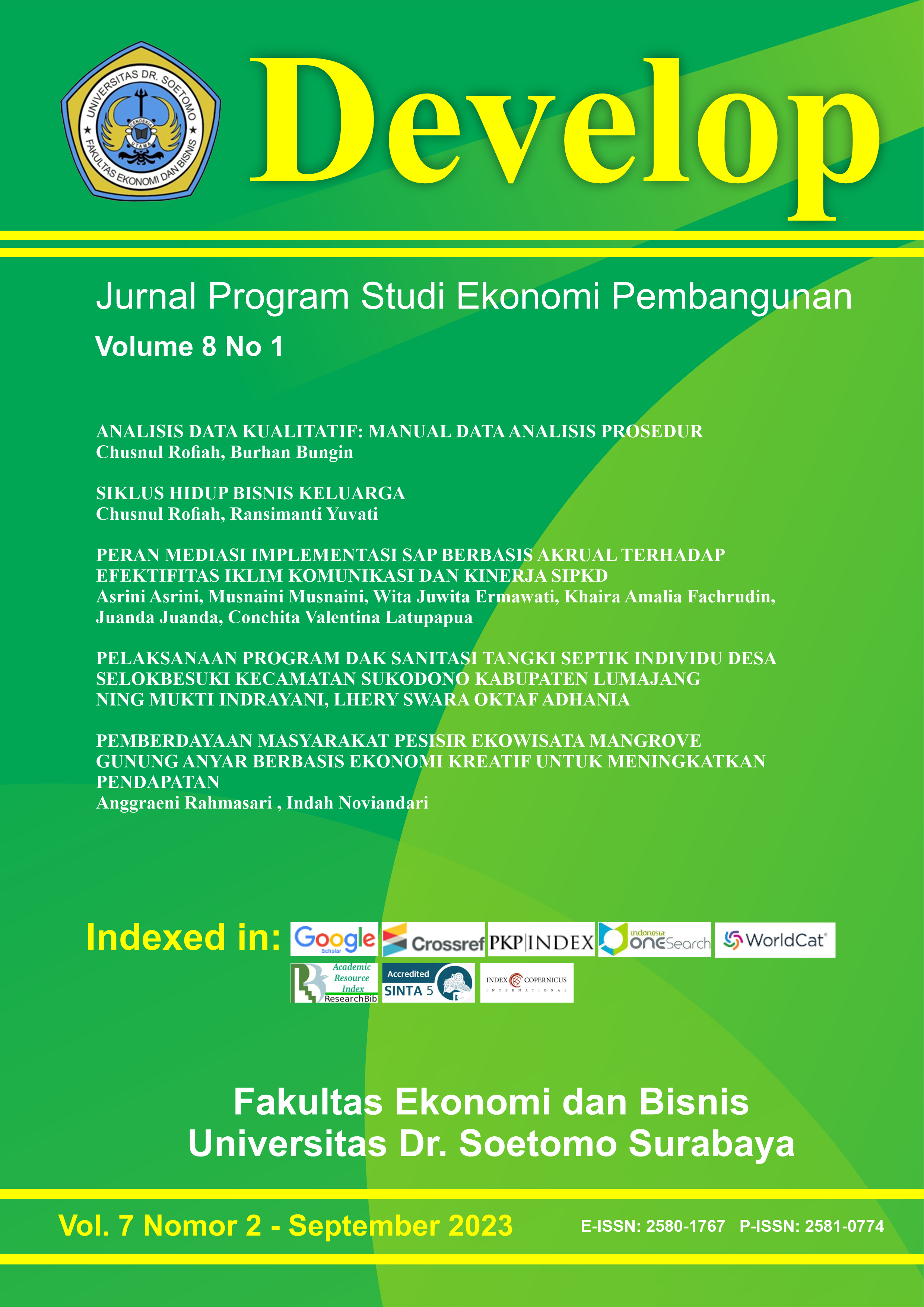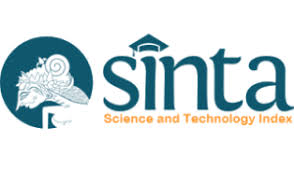PELAKSANAAN PROGRAM DAK SANITASI TANGKI SEPTIK INDIVIDU DESA SELOKBESUKI KECAMATAN SUKODONO KABUPATEN LUMAJANG
 Abstract views: 310
,
Abstract views: 310
,
 PDF Journal downloads: 436
PDF Journal downloads: 436
Abstract
One of the policies of the Central Government through the Ministry of Public Works is the existence of the Community-Based Environmental Sanitation Special Allocation Fund Program in the provision of infrastructure and facilities for residential wastewater, waste and drainage for low-income communities in densely populated, slum and sanitation-prone environments, which is implemented through the activities of the Community-Based Sanitation Special Allocation Fund, which is an initiative to promote the provision of infrastructure and facilities for residential wastewater, waste and drainage that are community-based with a needs response approach. Selokbesuki Village is one of 10 villages that are prioritized to receive the Special Allocation Fund in the sanitation sector through selection, which must meet specific criteria, general criteria, and technical criteria. Selokbesuki Village is regionally located in the Lumajang city area where the infrastructure of sanitation is still inadequate and the decent category has not yet reached the safe category. With the aim of knowing the Implementation of the Individual Septic Tank Sanitation DAK Program in Selokbesuki Village and to find out what factors hinder the Implementation of the Individual Septic Tank Sanitation DAK Program in Selokbesuki Village. The method used is descriptive with a qualitative approach, the data collection methods used are observation, interviews and documentation, the implementation of the Individual Septic Tank Sanitation DAK Program in Selokbesuki village is carried out by the Self-Managed Implementation Team of the Berkah Jaya Community Self-Help Group [TPS KSM] which consists of local residents. Implementation of activities through three stages of fund disbursement, namely Phase I budget 25% physical target achievement 12 units, Phase II budget 45% physical target 23 units and phase III 30% physical target 15 units. The implementation went quite smoothly and was completed at the specified time even though there were obstacles in changing builders and delays in disbursement of funds at each stage of disbursement.
References
Agustino, L. (2016). Dasar-Dasar Kebijakan Publik (Edisi Revisi). Bandung: Alfabeta.
Buku Petunjuk Pelaksanaan Penyelenggaraan Dana Alokasi Khusus Infrastruktur Bidang Santasi, tahun [2022]
Huda, S., dan Wiwik, W. 2016. Pemanfaatan Limbah Kotoran Sapi Menjadi Pupuk Organik Sebagai Upaya Mendukung Usaha Peternakan Sapi Potong Di Kelompok Tani Ternak Mandiri Jaya Desa Moropelang Kec. Babat Kab.Lamongan. Axiologiya, Jurnal Pengabdian Masyarakat 2016, Vol.1.No.1
Wahab, S. A. (2014). Analisis Kebijakan dari Formulasi ke Penyusunan ModelModel Implementasi Kebijakan Publik JOM FISIP Vol. 7: Edisi I Januari – Juni 2020 Page 13
CC BY 4.0 Creative Commons Attribution 4.0 International. This license requires that reusers give credit to the creator. It allows reusers to distribute, remix, adapt, and build upon the material in any medium or format, even for commercial purposes.
BY: Credit must be given to you, the creator.



2.png)






